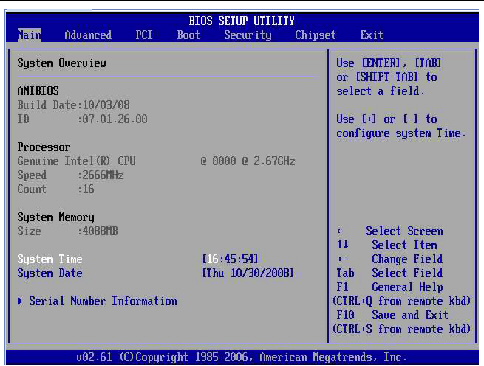Now you can download your motherboard’s latest BIOS update and update utility from the manufacturer’s website. Press Window Key+R to access the “RUN” command window. Then type “msinfo32” to open your computer’s system information log. Your current BIOS version is listed under “BIOS Version/Date”.
How do I check my current BIOS drivers?
Click Start, choose Run, and type msinfo32. This displays the Windows System Information dialog box. You should see a BIOS Version/Date entry in the System Summary section. Now you know the current version of your BIOS.
How do I know if my computer needs a BIOS update?
Some will check if an update is available, while others will only show you the current firmware version of your current BIOS. In that case, you can go to the download and support page for your motherboard model and see if a newer firmware update file is available than the one currently installed.
Do you need to update BIOS drivers?
It is important to update your computer’s operating system and software. BIOS updates won’t make your computer faster; they won’t add new features you need and may even cause additional problems. You should only update your BIOS if the new version contains the required improvement.
How do I check my BIOS settings?
Use Command Prompt Windows Logo Key + S -> Type cmd in the search box -> Click on Command Prompt. Type wmic bios get smbiosbiosversion -> Enter -> Check your BIOS version number.
How do I check the BIOS version without booting?
Instead of rebooting, check out these two places: Open Start -> Programs -> Accessories -> System Tools -> System Information. Here you will find System Overview on the left and its contents on the right. Locate the BIOS version option, and your flash version will be displayed.
What does updating the BIOS do?
Hardware Updates: Newer BIOS updates allow the motherboard to correctly identify new hardware such as processors, RAM, etc. Increased stability—If bugs and other issues are found with motherboards, the manufacturer will release BIOS updates to address and fix these bugs.
Is it safe to flash BIOS?
In general, you don’t need to update your BIOS that often. Installing (or “flashing”) a new BIOS is more dangerous than updating a simple Windows program, and if something goes wrong in the process, you could freeze your computer.
How long does it take to update the BIOS?
The BIOS flash can take several minutes to several hours. Once the BIOS update is complete, your computer will reboot. It is very important not to interrupt the power supply to the computer. Any interruption can corrupt the BIOS and render your computer useless.
How do I know if I have UEFI or BIOS?
To check if your computer uses UEFI or BIOS, Press the Windows + R keys simultaneously to open the Run box. Type MSInfo32 and press Enter. In the right pane, find “BIOS Mode”. If your PC is using BIOS, Legacy will be displayed. If it uses UEFI, UEFI will be displayed.
Why did my BIOS update automatically?
The system BIOS can be automatically updated to the latest version after Windows is updated, even if the BIOS is rolled back to an older version. This is because a new program, “Lenovo Ltd. Firmware,” will be installed during the Windows update.
Does updating the BIOS change the settings?
When you update your BIOS, all settings will be reset to default. So you have to go through all the stages again.
How do I boot into the BIOS?
Boot to UEFI or BIOS: Boot the PC and press the manufacturer’s key to access the menus. Commonly used keys: Esc, Delete, F1, F2, F10, F11, or F12. Or, if Windows is already installed, from the Sign In screen or Start menu, select Power ( ) > hold down Shift while selecting Restart.
How do I check the BIOS version of my motherboard?
Check your BIOS version through the system information panel. You can also find your BIOS version number in the System Information window. On Windows 7, 8, or 10, press Windows + R, type “msinfo32” in the Run box, then press Enter. The BIOS version number is displayed in the System Summary panel.
How do I know which BIOS my motherboard has?
Identifying the BIOS version of your motherboard: A sticker on the BIOS chipset contains the default BIOS version. When your computer boots up, press F2 to enter the BIOS settings. In Windows OS, you can use system detection software such as CPU-Z to check the BIOS version.
Is the BIOS version printed on the motherboard?
Motherboard Revision: The motherboard revision is on the board itself next to the model name.
What happens if a BIOS update fails?
If your BIOS update procedure fails, your system will be unusable until you replace the BIOS code. You have two options: Install a replacement BIOS chip (if the BIOS is in a socket chip). Use the BIOS recovery feature (available on many systems with surface-mounted or soldered BIOS chips in place).
Is the HP BIOS update secure?
It is not a scam if downloaded from HP’s website. But be careful with BIOS updates; if they fail, your computer may be unable to boot. BIOS updates can provide bug fixes, newer hardware compatibility, and performance improvements, but make sure you know what you’re doing.
How do I stop the BIOS update?
Disable the additional updates, disable the driver updates, then go to Device Manager – Firmware – right-click and uninstall the version currently installed with the ‘uninstall the drivers’ box checked. Install the old BIOS, and from there, you should be fine.
Should BIOS backup flash be enabled?
FFlashing your BIOS from Windows is generally discouraged by motherboard manufacturers. Lashing your BIOS with a UPS installed is best to provide your system with backup Power. A power outage or failure during flashing will cause the upgrade to fail, and you cannot boot the computer.
